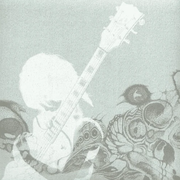|
Does anybody have a photo guide for how to change the lines in a two tap tower like this one? I bought the whole thing already put together, and honestly I can't even figure out how to get the drat top off of it to get at the lines to begin with.
|
|
|
|

|
| # ? May 15, 2024 13:59 |
|
Hi thread! Boyfriend and I have been brewing for a short time now; we just tasted our third batch last week. So far we've only used pre-assembled extract kits, but we've dry hopped in the fermenter to help customize each batch at least a little bit. We also entertain pretty often and give away a lot of our beer, so we're looking to upgrade to 10 gallon batches in the near future. I had an idea for our inaugural 10 gallon batch that I think could be fun and help us learn a little more about the process. Since we will be brewing in one pot and then splitting into two fermenters, I wanted to try brewing something basic and then adding different (preferably opposite/complementary) flavorings to each of the fermenters. We'd call it Good Twin and Evil Twin. Can anyone suggest a good beer type and additives that might work for this? I feel like the natural answer is a stout, possible a chocolate coffee and a vanilla mint, but it will probably be mid-summer by the time we manage to finish this and it seems like a stout would feel out of season (though Boyfriend is determined to have stout floats). Ideas? Also, how did you all transition from using kits to creating and balancing your own recipes? I'd really like to be able to piece together something of my own, but I feel like I have no idea where to start and not end up with a crazy mess. I read How to Brew a while back and that helped, but not enough that I'm ready to take the plunge. I tend to stick to recipes when I cook, too, so it's a hard habit to break.
|
|
|
|
My advice as far as recipe creation - any time you do two different kits that use the same ingredient - try to isolate the flavor of that ingredient - try to correlate the amount used in the recipe with how strongly that flavor is present - does this ingredient interact differently with the ingredients that are different? Also, rather than using kits, you can look up extract recipes - this forces you to become familiar with the specialty grains and the amounts/ratios in which they are usually added. I didn't start inventing my own recipes until I went all-grain as the possibilities really explode then. For your Good/Evil Twin experiments I would advise that you try a little bit of everything, but most importantly I would advise that you start these experiments with yeast rather than fruit/spices/etc. For example brew a Dry Irish Stout and ferment one 5gallon batch with Irish Ale yeast and the other with Dry English Ale yeast - this is a good way to get a feel for how important yeast selection is. Super Rad fucked around with this message at 21:17 on Mar 19, 2012 |
|
|
|
Hey, welcome to the thread. One great way to split a batch is to use different yeasts in the two fermenters. Make a nice pale ale and use a British yeast in one and an American yeast in the other - or just strains with different characteristics - one more malty, the other more estery, or something. As to creating my own recipes, it was kind of a gradual process for me I started by brewing recipes from the New Complete Joy of Home Brewing, but the shop rarely had exactly what the recipe called for, so I was forced to sub things in. Eventually, I got confident and experienced enough to know where I wanted to tweak things and how to tweak them. For a long time, my basic MO for making recipes has been to read about a million recipes that are in the style I want to make, then synthesize them into a recipe that has all the bits I like. This still might get changed a bit on the fly based on what I have on hand or what the shop carries. Also, if you don't already have one, a propane burner is going to be pretty much required to do ten gallon batches. Jo3sh fucked around with this message at 21:17 on Mar 19, 2012 |
|
|
|
Every style is good for comparing two different beers made from the same mash/boil. You can pitch different yeasts and get surprisingly different beer. Read Radical Brewing, maybe I guess Designing Great Beers. The former is a classic beloved by all, the latter is a bit stuffy but some people still get good info out of it.
|
|
|
|
Thanks very much! I don't know why different yeasts didn't occur to me, but that's a great suggestion, as is slowly subbing in/combining different recipes. And yes, we're getting a propane burner too. This will be our first real equipment upgrade since we cobbled stuff together to get started, and I think it's going to be a doozy...
|
|
|
|
Acceptableloss posted:I think that's probably a good I idea. I'll try doing a nice hot mashout followed by batch sparging next time to see if that rinses the sugars out of the grain better. Hmm so it sounds like your efficiency issues are stemming from enzymatic activity? Have you ever measured the pH of the mash? What are you using for your water? Do you have a reliable/calibrated thermometer to make sure you're hitting your target mash temps? If none of those are at issue we will need to know your exact process as there may be some room for improvement there. As suggested, if you are fly sparging you may be having issues - try a batch sparge once and see if it does the trick.
|
|
|
|
drat Your Eyes! posted:Thanks very much! I don't know why different yeasts didn't occur to me, but that's a great suggestion, as is slowly subbing in/combining different recipes. If you haven't yet, check out http://www.hopville.com - their layout is clean and easy to navigate, and they have a ton of adjunct ingredients to search for which, when crossed with a style you're going for, serve as a terrific jumping-off point for recipe ideas.
|
|
|
|
I read Palmer's How to Brew and learned a lot from it, but I wish I picked up The Complete Joy of Homebrewing by Papazian much much sooner. I didn't read that until I was already doing all grain and there are so many things that I just didn't understand from Palmer's book that Papazian made seem like the simplest concepts ever. I guess that isn't all that much on how to formulate recipes, but just from a general beginner standpoint, I can't recommend reading both of them enough in order to get a solid fundamental picture of what is happening in your beer. I basically do what Jo3sh does with regard to recipes, I think about the style I'm going for, read as many recipes as I can (and hopefully tasting notes on them), pick out what I like, ask in this thread if anyone has experience with any weirder ingredients, then fiddle around with everything in Beersmith. Beersmith is another thing I can't recommend enough, I probably only use 30% of it's functionality, but for how useful it is for tweaking recipes and getting immediate feedback on things like alcohol, color, and IBUs, and for managing all the water, temp, mash schedules, etc it is well worth its price. My last suggestion is to pick up Radical Brewing. It not only has awesome recipes to base your own designs on, but Mosher really seems to spend more time explaining the whys and hows of brewing from the perspective of the final product. The book also has some great reference tables for some of the weirder ingredients you can use and the effect they have on a beer. I'm pretty sure on Friday I mentioned the three one gallon batches my brew partner and I put together in a (way too long) triple brew day. Here are the recipes we ended up using along with the categories for the very not-official brewing contest we are entering at a local bar. A yet to be named Imperial India Black Ale for their IBA catagory: quote:8oz Carafa II For their "Funky Fermentables" category we made a Chocolate-Bacon Oatmeal Stout. Since at least some of the fermentables need to come from a non-traditional source, we threw a hershey bar in at the 30 minute mark of the boil, and will probably dry hop with some cocoa. We also baked up some bacon to extra crispy (to get rid of as much fat as possible) and we will be dry hopping with it right before bottling in hopes of getting just a hint of bacon flavor to make this beer into a breakfast in a glass. quote:8oz Crystal 120 The last beer we had was for their "Fruit and Spice" category. Just like the one above, this category doesn't have a required base style, but needs to focus on bringing together complementing fruit and spice flavors. We ended up with a very simple grain bill and focusing on using Blackberries and Cardamom for our fruit and spices. It's a 100% Brett beer as well. quote:2lb Pilsen Malt All three of these beers are really reaching outside my comfort zone. I've avoided IPAs since it seems like every homebrewer I know has 5 IPAs for every other style of beer they've brewed. I also feel like it's easy to miss flaws in the beer when there is so much hops in it. I've also never done anything with any brett but I'm really interested in it (finally got my copy of Wild Brews) and I've never done anything with Cardamom or dry hopping with fruit. As for the Funky Fermentables, We figure that will turn out really good and unique, or an absolutely disgusting mess, but it will be an interesting experience to say the least...
|
|
|
|
So I couldn't decide what the gently caress to brew, but I did stop at the homebrew shop anyways since I was in the neighborhood. Looks like I'm gonna do a belgian dark ale on jamesons soaked oak chips. Forgot to buy some more candi sugar stuff but I have a half pound leftover and figure I can substitute the rest with turbinado, caramelizing it if I need to I guess. I'm going for something strong here, and while I haven't gone on hopville yet and sorted everything out, this should be a 9-10%. This was just kinda hastily thrown together, so I dunno. The recipe I think will come out ok, but I'm not sure about how to treat the yeast. Went with the westmalle, WLP530. Anyways 7 lbs Golden Promise .5 lbs Special Aromatic .5 lbs dark candi sugar .25 lbs caramelized turbinado .25 lbs crystal 15 .25 lbs chocolate malt Tettnanger hops WLP530 yeast ^That's for a 3 gallon batch. I seem to recall reading something somewhere (probably here) about letting the fermentation temp rise over a couple of days to the upper 70s, then as fermentation starts to die down lowering it or something. Also I know for some belgian styles/ yeasts they're supposed to work better by adding sugar during the ferment, so is that something I should bother with? Well anyways I gotta clean bottles to get this IPA out of my fermenter, so I'll start figuring out this belgian after. Any advice would be appreciated though, thanks.
|
|
|
|
Letting it rise into the 70's is a good idea after the first couple days, it'll help the yeast attenuate fully and clean up after themselves. Not sure about then dropping it again, although I think some people do "lager" their Belgian brews around 50 for a few weeks after fermentation is totally done. As for adding the sugar on like day 3 of fermentation, that's another technique for getting a real dry, highly attenuated beer. So if that is what you want, go for it. Yeast doesn't love fermenting a 1.090 wort, so you can cut it some slack by brewing something lower gravity and then goosing it with sugar after a few days.
|
|
|
|
Oh alright. I wasn't sure about why I should be doing either of those things, but now that I know the purpose I'll take that in to consideration when sorting out this recipe later. Thanks.
|
|
|
|
James Bont posted:So I couldn't decide what the gently caress to brew, but I did stop at the homebrew shop anyways since I was in the neighborhood. Looks like I'm gonna do a belgian dark ale on jamesons soaked oak chips. Forgot to buy some more candi sugar stuff but I have a half pound leftover and figure I can substitute the rest with turbinado, caramelizing it if I need to I guess. I'm going for something strong here, and while I haven't gone on hopville yet and sorted everything out, this should be a 9-10%. This was just kinda hastily thrown together, so I dunno. The recipe I think will come out ok, but I'm not sure about how to treat the yeast. Went with the westmalle, WLP530. Anyways For a strong beer using 530 that you plan to age for a while you can pick up some good esters going up to the high 70s, maybe 78-80. I let my last attempt at a belgian dark strong using Saq's recipe start off about 72 and rise to just over 80 where I held it with a heater until it was done. The beer, after six months of aging, was spectacular. I did a simple ten gallon patersbier this weekend using 530 and I've got it chugging away set to 74 degrees. I'm hoping to get some good flavor but not need to age it forever.
|
|
|
|
drat Your Eyes! posted:Thanks very much! I don't know why different yeasts didn't occur to me, but that's a great suggestion, as is slowly subbing in/combining different recipes. I've been doing ten gallon batches, and another option is to use different dry hops when doing an IPA. If you're doing an Amarillo/Cascade IPA, give just Amarillo dry hops, and the other gets Cascade. Also entertaining is having people try both and telling them there's only one difference. I think most of my friends are convinced I'm lying about the different saison yeasts. I do different yeasts a lot, and when I make porter, one always gets cocoa nibs, and the other gets the experimental option.
|
|
|
|
Getting ready to do a summer hefeweizen this weekend and I have a few thoughts. I'm going to use WLP380 Hefeweizen IV as the yeast and I see it has notes of citrus and apricot. Would it be a bad idea to use cascade or some other citrusy hop variety to try to compliment the yeast? edit: I'm thinking just a single 1/2 oz addition (3 gallon batch) at 15 minutes to keep the IBUs low. internet celebrity fucked around with this message at 18:51 on Mar 20, 2012 |
|
|
|
While it wouldn't belong in an authentic hefe, I don't see any major issue with using some American hops and giving it some hop flavor/aroma. Certainly American breweries have been re-interpreting the style anyways so what you brew may actually closely resemble certain American hefes. The whole lemon/orange slices in hefes is an American invention so the citrusy qualities of Cascade hops will go hand in hand with that interpretation of the style. IMO though the real focus of a hefe is the malt and yeast profile, adding hop flavor doesn't necessarily ruin the effect but it probably makes those flavors harder to pinpoint
|
|
|
|
Can hefe's be fermented somewhat warmer, say 70-75*F? Are there any other styles that lend themselves to warmer fermentation?
|
|
|
|
icehewk posted:Can hefe's be fermented somewhat warmer, say 70-75*F? Are there any other styles that lend themselves to warmer fermentation? They can but you will probably end up with an epic banana bomb. Saisons and anything "belgiany" are the go-to for something that has to ferment hot for whatever reason.
|
|
|
|
Docjowles posted:As for adding the sugar on like day 3 of fermentation, that's another technique for getting a real dry, highly attenuated beer. So if that is what you want, go for it. Yeast doesn't love fermenting a 1.090 wort, so you can cut it some slack by brewing something lower gravity and then goosing it with sugar after a few days. So would you add whatever point contribution to your OG, then calculate as normal since the sugar is generally fully attenuable?
|
|
|
|
How do people keep their fermentation temps between 64-68 in a glass carboy? At room temp., I'm seeing my fermentation temp. is getting to 74-78 because of the yeast activity. I was thinking of putting the carboy into a 18 or 20 gallon ice bucket filled with water.
|
|
|
|
Kelley Geuscaulk posted:How do people keep their fermentation temps between 64-68 in a glass carboy? At room temp., I'm seeing my fermentation temp. is getting to 74-78 because of the yeast activity. I was thinking of putting the carboy into a 18 or 20 gallon ice bucket filled with water. Do this. Then get a towel or two and cover the carboy with the bottom part of the towels submerged in the water. If the towels stay wet it'll help keep your temperature down.
|
|
|
|
I've been doing exactly that with a 6 gallon pail and a tall square cooler (after getting some advice in this thread last week). I add ice every night and have been rocking a steady 57. I'm hoping fermentation finishes before I have to remove water to add ice.
|
|
|
|
LeeMajors posted:So would you add whatever point contribution to your OG, then calculate as normal since the sugar is generally fully attenuable? If I understand you, yeah. After your boil and everything, your measured OG should be (Predicted OG for total recipe) - (Gravity contribution of Xlbs of sugar). After a few days you add the sugar, giving you a final %ABV that's the same as if you had just added the sugar to the boil. The idea being that by starting your ferment at 1.070 instead of 1.090, and then giving the yeast some easy to digest simple sugars, your final gravity will end up at say 1.010 instead of 1.018 (just making these numbers up). It's a big part of how Belgian tripels and double IPA's are so dry and drinkable despite being 8-10%.
|
|
|
|
Kelley Geuscaulk posted:How do people keep their fermentation temps between 64-68 in a glass carboy? At room temp., I'm seeing my fermentation temp. is getting to 74-78 because of the yeast activity. I was thinking of putting the carboy into a 18 or 20 gallon ice bucket filled with water. I had this problem the last batch I brewed. Solution go get a 20 gallon or bigger rubbermaid container. Fill that will cold water and place your carboy in that. Water temps fluctuate a lot slower than ambient air temperature does so the most work you have to do is add a couple handfuls of ice if the water starts to get up passed 68* I just did this and my water temp read 64* and my fermenter was reading between 64-66* for most of the first days of fermentation.
|
|
|
|
Docjowles posted:If I understand you, yeah. After your boil and everything, your measured OG should be (Predicted OG for total recipe) - (Gravity contribution of Xlbs of sugar). After a few days you add the sugar, giving you a final %ABV that's the same as if you had just added the sugar to the boil. ....and I can use less DME in my starter (doing a 1.090 starter sucks) I've been thinking of doing this since I got that powerpoint from The Bruery on super-attenuation, but wasn't sure if the sugar contributes same gravity points post boil as during the boil. Thanks man.
|
|
|
|
Trying my Oktoberfest for the first time today. Not what I was hoping for, but not bad for my first lager. Color and clarity is spot on. No weird off flavors. It just isn't quite Ayinger good. Ingredients are on the way for a slightly different recipe. More emphasis on Vienna malt (80% of the grain bill) and Munich Lager yeast instead of Oktoberfest blend. Still gonna do a double decoction, cause I'm crazy like that. 2.5 gallon (OG: 1.056 FG: 1.014 ABV: 5.6%) 4 lbs Vienna Malt 8.0 oz Munich II 4.0 oz Caramel/Crystal Malt - 80L 4.0 oz Caramunich I 0.5 oz Hallertau [5.00 %] - Boil 45.0 min .25 oz Hallertau [5.00 %] - Boil 30.0 min 1.0 pkg Munich Lager
|
|
|
|
Splizwarf posted:I've been doing exactly that with a 6 gallon pail and a tall square cooler (after getting some advice in this thread last week). I add ice every night and have been rocking a steady 57. I'm hoping fermentation finishes before I have to remove water to add ice. The solution for this is to use icepaks/frozen water bottles instead of ice cubes once you reach this point.
|
|
|
|
Anyone have a lot of experience brewing with WLP400/Wyeast 3944, Belgian Wit? I brewed a wit last year that was fine, but utterly bland. Recently had a great rye wit from Freetail Brewing in Texas and I'm inspired to brew an homage. My notes say I fermented around 68 and it was "peppery". Some quality time on Google suggests a cooler temp might cut out the pepper, which I want to do since with the addition of Rye it could get overwhelming. I'm worried about losing ester production by going cold and making an even blander beer, but I suppose I could always compensate by adding more orange peel and spices. Any other tips on wit strains would be great. I have minimal experience with Belgian yeasts other than Westmalle. Also as a random PSA, I just noticed that the "Check for Updates" button in BeerSmith doesn't loving work. Or at least in the old rear end version I had, it doesn't. I happened to be looking at their website today and I noticed I was 20 builds behind the newest version  Go to Help > About BeerSmith and if you are older than 2.0.57, download the latest off Beersmith.com. I was on like 2.0.37. Go to Help > About BeerSmith and if you are older than 2.0.57, download the latest off Beersmith.com. I was on like 2.0.37.Edit: Just found this flavor chart linked off Homebrewtalk. Based on that it seems like I should have gotten a totally different flavor profile, maybe my thermometer was bad? Docjowles fucked around with this message at 03:05 on Mar 21, 2012 |
|
|
|
LeeMajors posted:....and I can use less DME in my starter (doing a 1.090 starter sucks) Whoa whoa whoa, from what I've read, you don't want a starter getting too far north of 1.040, because of the whole shock thing. You do the 1.040 starter to prepare for 1.090 conditions So getting back to my maple syrup question, the brix of the maple syrup is 67.9, so what is the best way to plug that into a recipe on beer smith to get the right math? Do I need to weigh a known measure then go from there?
|
|
|
|
Darth Goku Jr posted:So getting back to my maple syrup question, the brix of the maple syrup is 67.9, so what is the best way to plug that into a recipe on beer smith to get the right math? Do I need to weigh a known measure then go from there? 67.9 brix is 1.341 it says here. Each gallon of maple syrup therefore contains 341 points of extract, or about 21 points per cup. For the sake of argument, let's say you wanted to make 5 gallons of wort at 1.060 and you had 1.045 accounted for with malt. If you wanted to make up the difference with maple syrup, you would need 15 points times 5 gallons, or 75 points. At 21 points per cup of syrup, you would need just over 3 1/2 cups of maple syrup. Or you can trust Hopville, which calls maple syrup 30 points per pound per gallon, and add your syrup by weight. 75 points of extract would therefore be 2.5 pounds. Duh, specific gravity is density as related to water, which is defined as 1.000; we can assume then that maple syrup is 1.341 times as dense as water. Maple syrup at 67.9 brix should then weigh about 11.175 pounds per gallon, and 2.5 pounds of the stuff should have a volume of 3.584 cups. So yes, it looks like Hopville's number of 30 PPG for maple syrup is accurate. Jo3sh fucked around with this message at 06:32 on Mar 21, 2012 |
|
|
|
Maple Syrup is already in Beersmith 2 under grains (They need a better name for this category. Fermentables perhaps?). 1.030 SG.
|
|
|
|
Quick question about conditioning: Can the bottled beer remain at fermentation temperature for too long? Or can they stay there without being chilled if I've calculated my priming sugar right, meaning once the yeast have eaten the sugar they'll just go dormant and nothing else will happen? I ask because chilling space is at a premium in my house at the moment, and I have 7-8 more liters of stout that were bottled a month or so ago. I will also be having my tripel be finished with its recommended 6 weeks soonish.
|
|
|
|
Darth Goku Jr posted:Whoa whoa whoa, from what I've read, you don't want a starter getting too far north of 1.040, because of the whole shock thing. You do the 1.040 starter to prepare for 1.090 conditions I raise gravity step-wise through a series of like 3 or 4 starters, trying to minimize shock. Not 1.090 out of the gate. Either way, makes my life easier. And it makes for spectacularly explosive fermentation later on.
|
|
|
|
Super Rad posted:The solution for this is to use icepaks/frozen water bottles instead of ice cubes once you reach this point. Dammit, why didn't I think of that? Thanks!
|
|
|
|
Spergio Leone posted:Quick question about conditioning: Can the bottled beer remain at fermentation temperature for too long? Or can they stay there without being chilled if I've calculated my priming sugar right, meaning once the yeast have eaten the sugar they'll just go dormant and nothing else will happen? It will age/go stale quicker. Its not a huge deal since stale beer is still pretty good, to a certain point you probably won't reach unless you leave a pale ale in the closet for a year.
|
|
|
|
Oh phew then it's no big deal. Aside from ones I'll actively want to age I don't see many brews lasting that long in this house!
|
|
|
|
beetlo posted:Maple Syrup is already in Beersmith 2 under grains (They need a better name for this category. Fermentables perhaps?). 1.030 SG. Yeah I know it was, but I didn't want to assume anything as far as their grade of syrup or specific gravity, and then I did convert to SG at 1.341 but couldn't get the program to let me go that high. Jo3sh posted:67.9 brix is 1.341 it says here. Each gallon of maple syrup therefore contains 341 points of extract, or about 21 points per cup. Ahh, this makes a lot more sense on how to look at it. Thanks a lot.
|
|
|
|
Do you guys ever do something like a mini batch (1-2 gallons) to try out a recipe? Is it as simple as scaling your normal recipe down?
|
|
|
|
ChiTownEddie posted:Do you guys ever do something like a mini batch (1-2 gallons) to try out a recipe? Is it as simple as scaling your normal recipe down? Yes, & yes. I did a two gallon batch of braggot, and then split it to two one-gallon batches to try out using honey and attempt something with a touch of souring.
|
|
|
|

|
| # ? May 15, 2024 13:59 |
|
Has anyone used both a Blichmann beer gun and a traditional counterpressure filler? If so can you comment on how well each works? I appreciate the principle behind the Blichmann beer gun, but while it might look dandy on paper the question remains as to how well it actually works. Process-wise I'd definitely much prefer it to a counter-pressure filler.
|
|
|






















